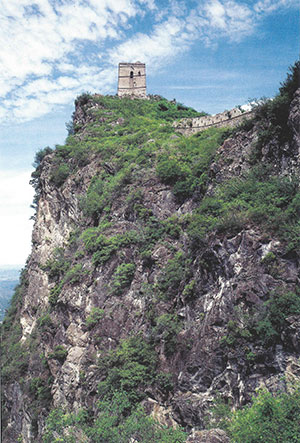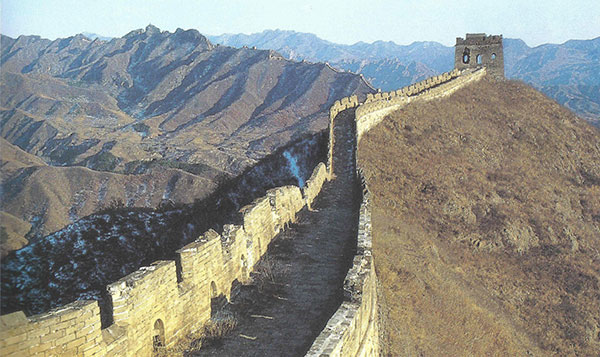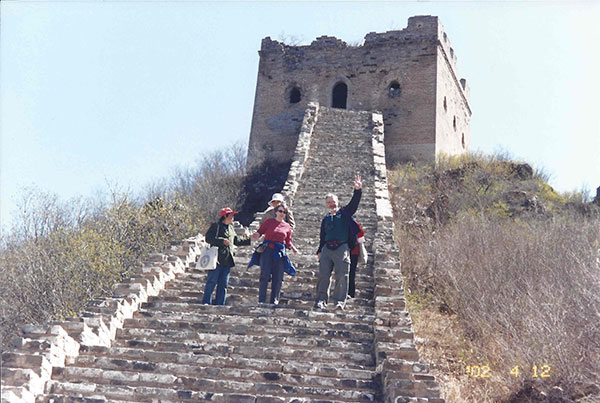
Simatai portion of the Great Wall of China
It is the spring of 2002. My husband, Ralph, our daughter, Britt, and I are in the back seat of a black sedan heading 120 kilometers north of Beijing, China to the Simatai section of the Great Wall of China. Driving the sedan is Miss Wang, legal assistant to Xu Yi Ping, a Chinese patent lawyer and long-standing family friend. In the second semester of her junior year, Britt, an East Asian Studies major, is in the country’s capital studying Chinese language and culture. I’m relieved to be traveling out of the densely populated, pollution-heavy city. During our stay, a massive sandstorm had enveloped Beijing, shrouding the city with yellow sand and dust.
The Simitai section of the 3,728 mile-long Great Wall of China is 3-5 miles long, built in 550-570 AD on some of the highest, most rugged cliffs in China. This section has been newly opened to tourists, and few are here on this blue-skied, sun-drenched April morning. We take a gondola up to a broad rock staircase that leads to the first guard tower where we’re met by three women that our friends call, “Goat Ladies.” Agile and experienced, for a fee they accompany travelers up to the “Staircase to Heaven,” an 85-degree slope which narrows to less than a foot near the peak. We decide to ascend without assistance.

A portion of the Great Wall of China with a fairly smooth walkway
An athlete, Britt scampers up the steep, ever-narrowing, rough and eroded trail like an antelope. Ralph goes ahead of me, steady and sure-footed. Bothered by the thin air, our Chinese friends stay behind. Soon the “steps” disappear. The trail becomes a rocky ladder with sheer precipices on both sides of it. By now I am crawling on all fours, breaking my nails on jagged rocks. Ralph calls out, “Eileen, don’t look down!”
Up ahead, Britt approaches the uppermost beacon tower. There, a Chinese guard with a stiff face and a cold black pistol makes a stop sign with his hand, telling her without words that she has come as far as she can go.
Britt descends first, followed by Ralph.
“I’m fine,” I tell them. “Go on, I’ll take my time coming down.”
If I try, I could reach out and touch a cloud.
But then I look down. Suddenly I am light-headed, dizzy, and frozen with fear. No amount of urging can make me take a step.
“Get the Goat Ladies!” I cried.

Three Chinese women assist me on my climb down from the heights.
Fortunately, the three kind and brave Chinese women have been following us—just in case. Ralph signals, and they hastily traverse the trail. A woman wearing a red cap takes me by my right hand, the other takes my left. The third, wearing a white hat, takes the lead. Step by step, the smiling strangers and I make the perilous descent. Soon the “staircase” becomes wider and wider. One lady lets go, and Ralph takes my hand.
What does this once-in-a-lifetime travel experience have to do with writing books for young readers?
Some months ago, a snippet of dialogue drifted into my mind:
“Little Rabbit, Little Rabbit, Where are you going?”
And the little rabbit answered, “I’m going to hop to the top of the Great Wall of China.”
Like a silver cloud tucked in my pocket, these words have traveled with me, urging me to start the rocky and uncertain journey to discover, and then tell, this little rabbit’s story.
